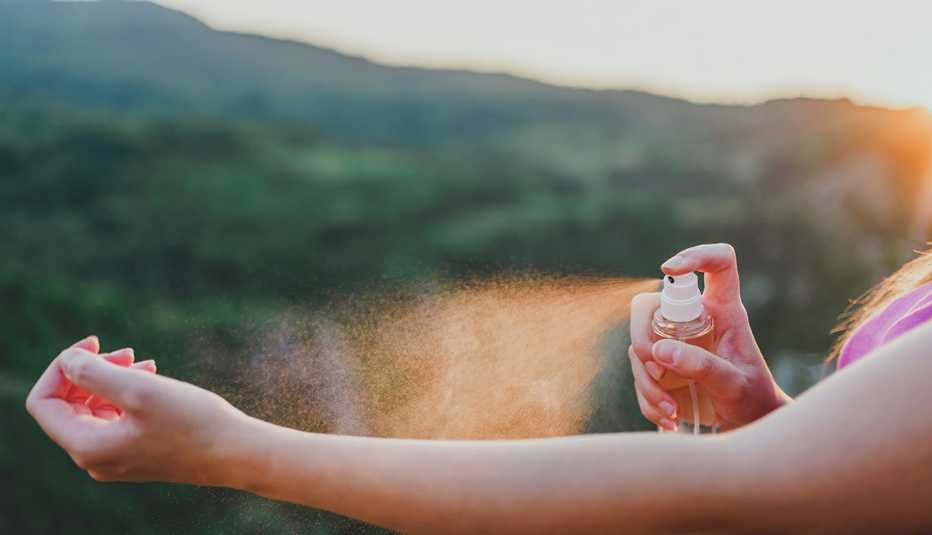AARP Hearing Center


Don’t tell my ex-husband, but I used to take secret satisfaction in mosquitoes preferring him over me. You see, years ago, when we renovated our house, I wanted a screened-in porch. He wanted to be able to see the sky — it’s tough to take a stand against stargazing — so our deck offered no protection from insects. Thus, when the darned mozzies made beelines right toward him, I couldn’t help but feel the cosmic marital scales tipped back into balance.
As it turns out, I am pettier than a mosquito. Their tastes, entomologists at the National Institutes of Health have learned, are based on a pastiche of blood type, metabolism, exercise (sweat), shirt color, and beer consumption, not lightly buried resentment. And other biters — bees, wasps, hornets, and certain spiders — have personal preferences, too. You can take simple steps to make your home life bite- and sting-free.
Let’s start by accepting that if there are smells and sights that insects love, there must be others that they loathe. We can’t change our blood types, and perish the thought that I would suggest you pour that artisanal IPA down the sink. Nay. Instead, your job is to make your skin, your clothing and your surroundings as unattractive as possible to whichever critters you’re trying to dodge.
First, consider personal alterations. To change your body’s odor to avoid mosquitoes, bees, wasps, and hornets you can slather yourself in scents like cinnamon, peppermint, cedar, citronella and lavender. Bees, wasps and hornets like the smell of bananas, so leave that banana shampoo on the shelf until the snow flies. Spiders dig the smell of sweaty socks; I will go as far as to suggest that not wearing sweaty socks around is a solid year-round practice regardless.
Enterprising companies have created luxury organic products to keep biters at bay. A quick online search will help you shell out as much as $30 for 2 ounces of luxury bug repellents concocted of essential oils like bergamot, orange, lemon and litsea, which is a type of shrub belonging to the laurel family. You can also check out the chemically heavy-hitting DEET-based repellants. In the early 1990s, there was a controversy over potential harm from DEET, but the Centers for Disease Control and the Environmental Protection Agency now says it’s safe and effective. Another popular ingredient to watch for is picaridin, a synthetic compound created to resemble black pepper.
Next, you can color-coordinate your outfit to repel bugs. Researchers at the University of Washington have concluded that wearing red, orange, black and cyan attracts mosquitoes to your body. They also deduced that mosquitoes avoid green, purple, blue and white. Given that cyan — an attractor — is a mix of blue and green — repellants — I found this color-coding confusing and probably not the best method. Imagine the person sitting next to you wearing a light, repelling color, but glistening with insect-attracting sweat? I’d think their skin’s buffet of lactic acid and ammonia would trump your cyan T-shirt any day of the week.
Unsurprisingly, unlike mosquitos, all those bees, wasps and hornets love bright colors (think flowers). There doesn’t seem to be a scientific consensus on what colors repel spiders, although they are drawn to green. In sum: Light colors seem the safest bet across the board.






























































More From AARP
Memorial Day Remembered
The unofficial start of summer is about more than hot dogs, beer and mattress sales
Armchair Expert
10 Free Classes You Can Take From Your Couch
Stop to Smell the Roses
At the very least, break up your trip at these memorable roadside attractions